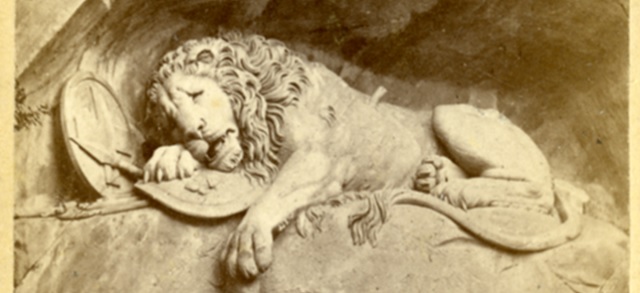
Spring 2022 Monuments Class Projects
Architect/Sculptor of Monument
Bertel Thorvaldsen
Preview

Keywords
Lion Monument; Lucerne, Switzerland; French Revolution, Insurrections of 1792, 1792; Swiss Gaurds; Tuileries Palace; Massacre: History - France - Paris; cartes-de-visite, Bertel Thorvaldesen; Lukas Ahorn
Physical Dimensions
6.1 cm wide, 10cm long
Date of Publication
18uu
Name of Monument
Lion of Lucerne
Date of Completion or Dedication of Monument
1821
City of Monument
Lucerne
Location within City
Denkmalstrasse
Country of Monument
Switzerland
Description
A carte-de-viste historical photograph of The Lion Monument, popularly called the Lion of Lucerne. This rock sculpture is dedicated to the Swiss Guards massacred during the French Revolution in 1792. Sculpted by Bertel Thorvaldsen
School of Art/Architecture
Neoclassical


